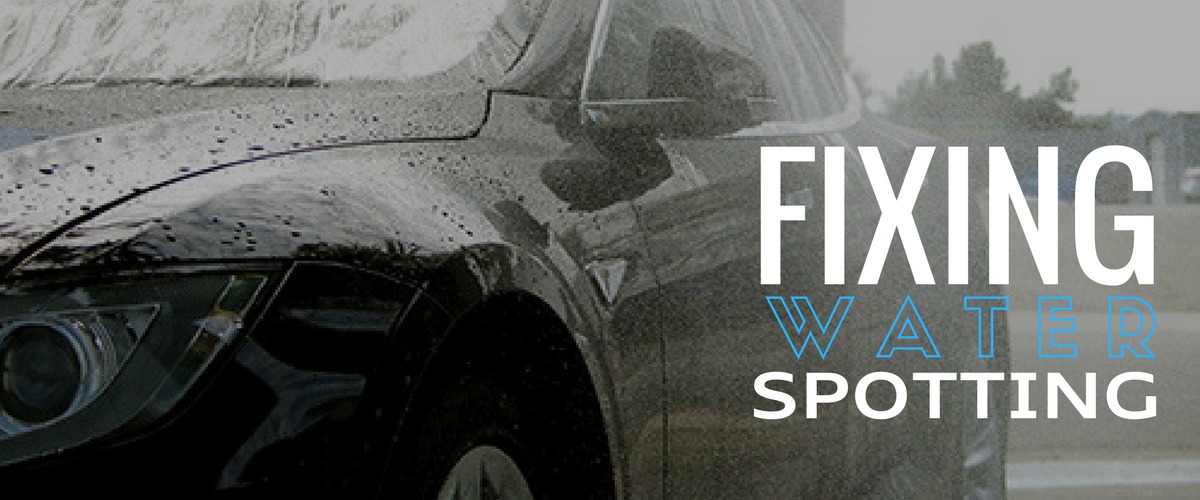What do You know about Water Stains on Your Car Exterior Surface?

One common issue we see in our professional detailing service is water stains on the vehicle exterior surface. Improper methods of removing water stains often result in damages to the paintwork of a vehicle such as swirlmarks and scratches.
There are various types of water stained marks. Similar process steps are generally carried out in treating different types of water stain marks; in some cases some special additional steps will be needed to deal with more persistent types of water stains.
Water Stains #1: Caused by Mineral and Dirt Deposits
Mineral and dirt deposits comprise the first category of water stains. These are mostly a result of trace minerals present in rain, sprinkler systems or in the car cleaning water, which remains to your vehicle exterior surface when it is washed but not dried off.
Water Stains #2: Caused by From Corrosive Liquids
This type of water stains refers to etchings or craters that appear in the paint due to some corrosive liquids such as aircon water discharge coming in contact with the car surface, which can detoriation of the car paint and even the lacquer.
To maintain the good finish, use the method described below to remove water stains from your car. While using your hands can take longer, the result is far more pleasing to the eye than what the other mechanical methods can achieve.
Steps For Removing Possible Water Stain Marks
- Wash the car thoroughly so mineral deposits on its surface loosen and rinse off.
- Make a careful visual inspection of the car surface to ascertain the presence of water spots. If needed, fluorescent bulbs can highlight spots that regular lighting does not reveal.
- Use detailing clay to rub the surface of the car. The clay will loosen the contaminants and carry them off. Remember to use fresh sides of the clay at regular intervals. You will need to knead the clay when it becomes dirty to expose fresh clay.
- Use of a mineral deposit remover may remove the spots if they are sitting on the surface of the paint. If the water stains have gone into the car’s paint, a simple chemical treatment of such will not remove them.
- Machine Polishing or Compounding may be needed to remove the water spots, or to correct the damage caused to the paint by chemical etching. In the worst cases, wet sanding may be required.
Prevent / Minimise Future Water Stain Marks
Applying a ceramic coating to the car’s surface will help to protect and increase your vehicle’s paintwork condition from any future water stains from dirt or biological matter. Ceramic coatings, glass coatings have hydrophobic self cleaning properties, meaning water will not sit on the car exterior surface. If any water stain marks remain, they will be on the coating and not your paint. That’s great news for vehicle owners or car enthusiasts who want that new car shine even after a rain storm.
Share with us your concerns, Contact us today!
